Introduction
In the face of economic turbulence and shifting market dynamics, businesses must adopt a proactive approach to ensure their survival and growth. This article delves into practical strategies for turning around struggling enterprises, starting with a thorough evaluation of current operations to identify root causes of decline. By developing a clear and realistic business plan, strengthening financial management, and enhancing marketing efforts, businesses can lay a solid foundation for recovery.
Furthermore, embracing innovation and setting realistic goals, coupled with strategic partnerships, offers a pathway to revitalization. These actionable insights aim to equip CFOs and business leaders with the tools needed to navigate challenges and drive sustainable success.
Evaluate Your Business
Start with a thorough evaluation of your current business operations. Collect and analyze financial statements, cash flow, and performance metrics to get a comprehensive view of your financial health. This step involves gathering both internal data, such as customer feedback and employee reviews, and external data, like industry trends and market dynamics. Identify areas that require immediate attention and compile a detailed SWOT analysis to pinpoint strengths, weaknesses, opportunities, and threats. This foundational understanding will guide your tactical decisions and help you adapt to market conditions. As Andrii Holubenko observes, utilizing new technologies like AI can further streamline these processes, freeing up valuable resources to focus on strategic growth.
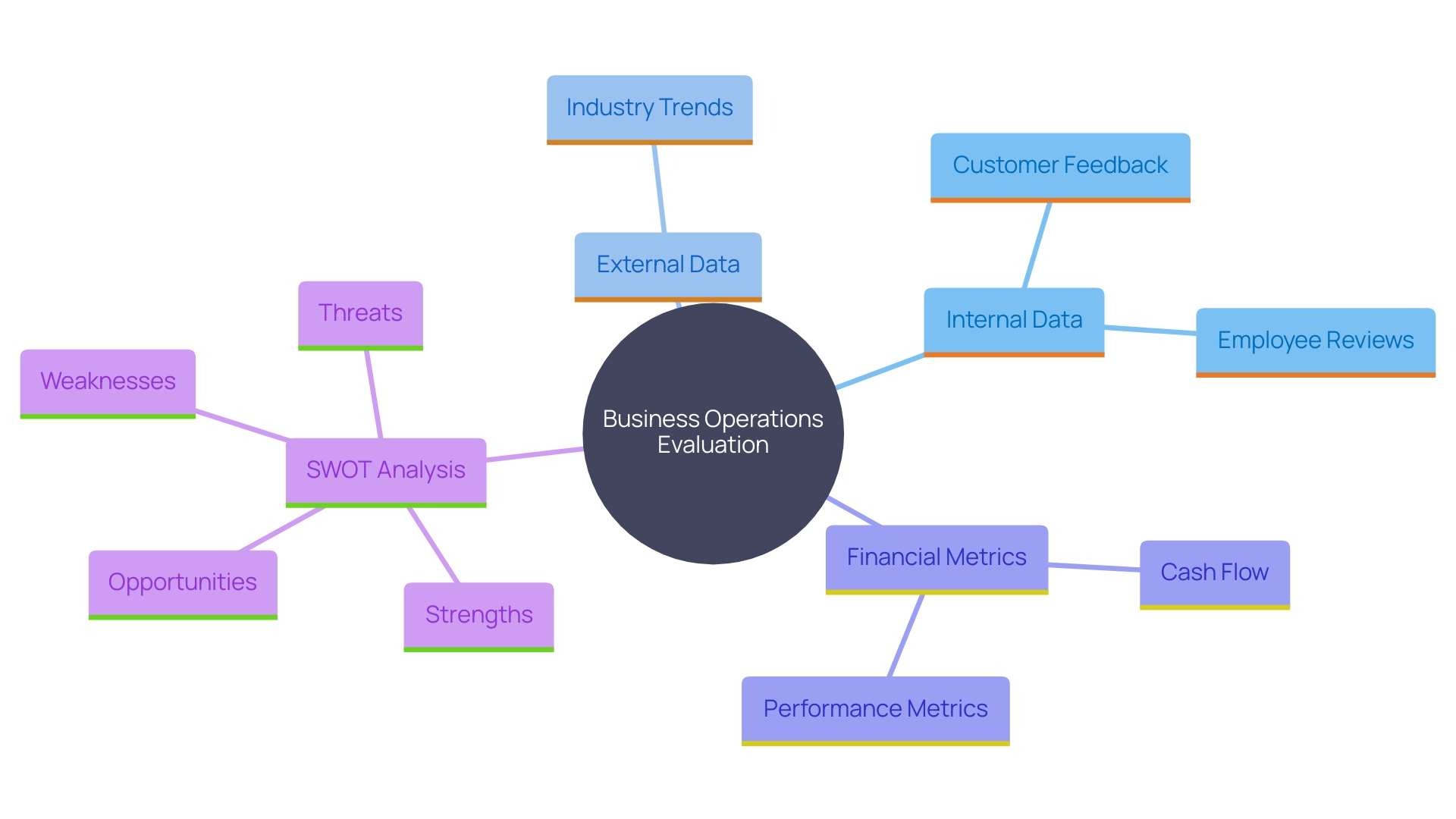
Identify the Root Causes of Decline
Identifying the primary issues contributing to business struggles begins with thorough investigation. 'Engage with employees, clients, and stakeholders to gather insights, leveraging tools like SWOT analysis to pinpoint strengths, weaknesses, opportunities, and threats.'. It's crucial to analyze client feedback, sales data, and market trends to discern patterns. For instance, poor-quality products can significantly impact customer experience, leading to negative organizational outcomes. Additionally, consider socio-cultural, economic, and technological factors to understand market context shifts. Implementing a root cause analysis (RCA) can help in diagnosing specific problems such as a decline in shopping cart conversion rates, allowing for targeted solutions. This comprehensive approach ensures that you address the underlying causes effectively, paving the way for sustainable recovery.
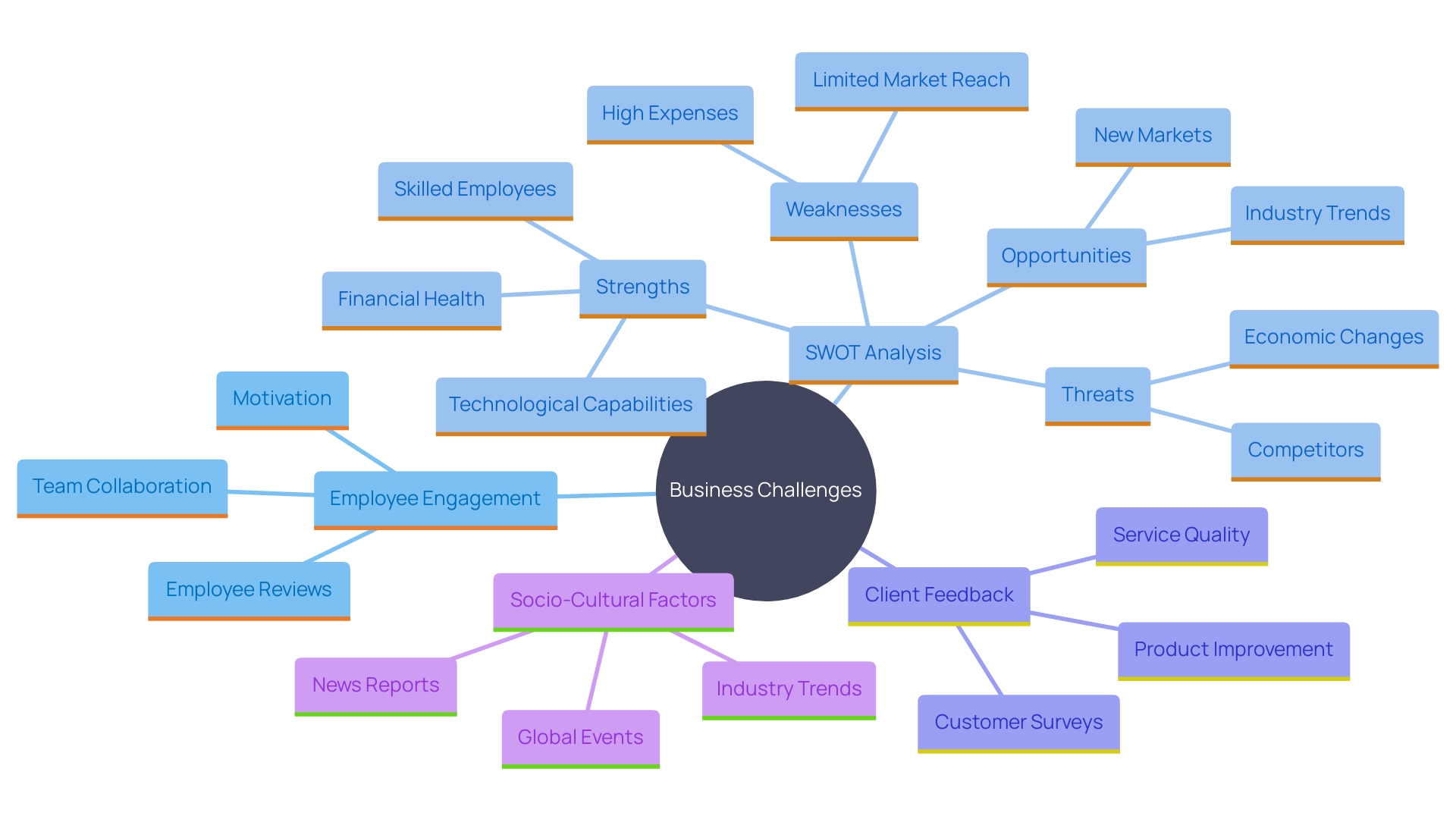
Develop a Clear and Realistic Business Plan
Create a detailed plan that expresses your vision, mission, and goals. This document should detail actionable steps to address identified challenges and leverage opportunities. For example, consider how John Young's multi-disciplinary approach enabled a major branded hotel to increase its F&B sales by leveraging its prime location. Such strategic adjustments can be crucial in revitalizing your enterprise.
Ensuring that your plan includes specific, measurable goals and timelines is essential. This allows for meticulous tracking of progress and adjustments as necessary. Drawing inspiration from successful projects, like the Smart City strategy for Éco-Cité Zenata, which proposed a detailed deployment plan for 5, 10, and 20 years, can help in creating a forward-thinking roadmap.
Moreover, embracing new technological advancements can significantly enhance your strategy. As Andrii Holubenko points out, automation and digital tools can liberate important resources, enabling small enterprises to compete effectively with larger firms. Incorporating these technologies into your plan can optimize operations and drive growth.
In laying out your strategy, remember that a well-structured plan serves not just as a guide but as a strategic tool for transformation and success.
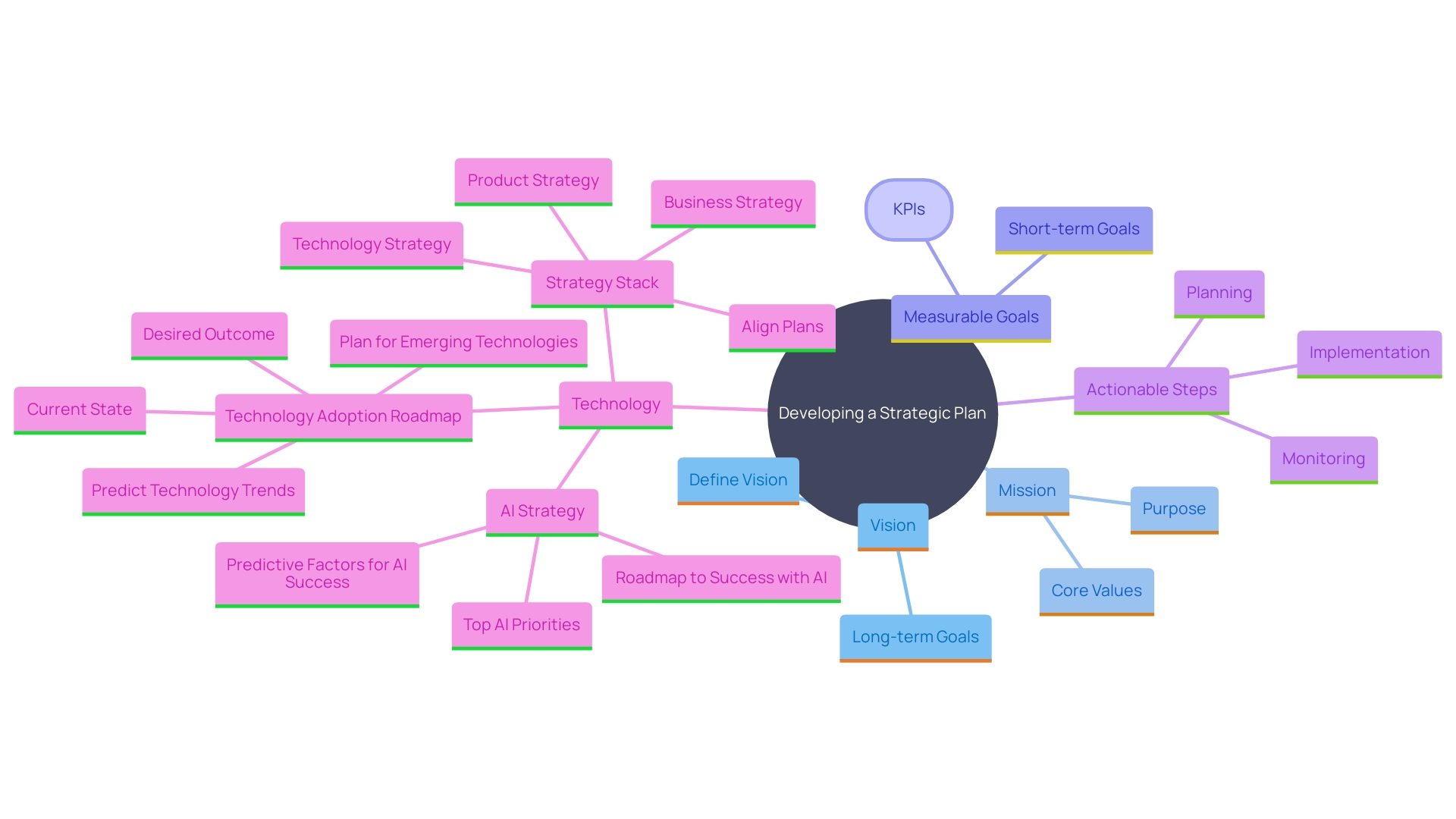
Strengthen Financial Management
Improving financial management practices is crucial for stabilizing and reviving a struggling enterprise. Implementing stricter budgeting controls can significantly mitigate financial risks. By streamlining cash flow monitoring, organizations can ensure liquidity and avoid potential cash shortages. Additionally, scrutinizing and reducing unnecessary expenses can free up capital, which is crucial for operations and growth.
Consider renegotiating contracts with suppliers to achieve better terms. This can reduce costs and improve cash flow. Exploring alternative funding options, such as purchase order financing, can also provide immediate financial relief. This type of financing enables businesses to satisfy client orders without exhausting their own resources, as a third-party company pays suppliers directly based on legitimate client purchase orders.
Moreover, keeping an eye on grant opportunities from government entities, foundations, and corporations can provide significant financial injections. These grants often target specific industries and initiatives, offering long-term benefits beyond immediate financial aid. Tailoring applications to meet eligibility criteria is essential for success.
Incorporating these strategies can lead to substantial improvements. For example, a prominent branded hotel successfully boosted its sales by utilizing its location and enhancing its service offerings, demonstrating the effect of a well-executed financial strategy.
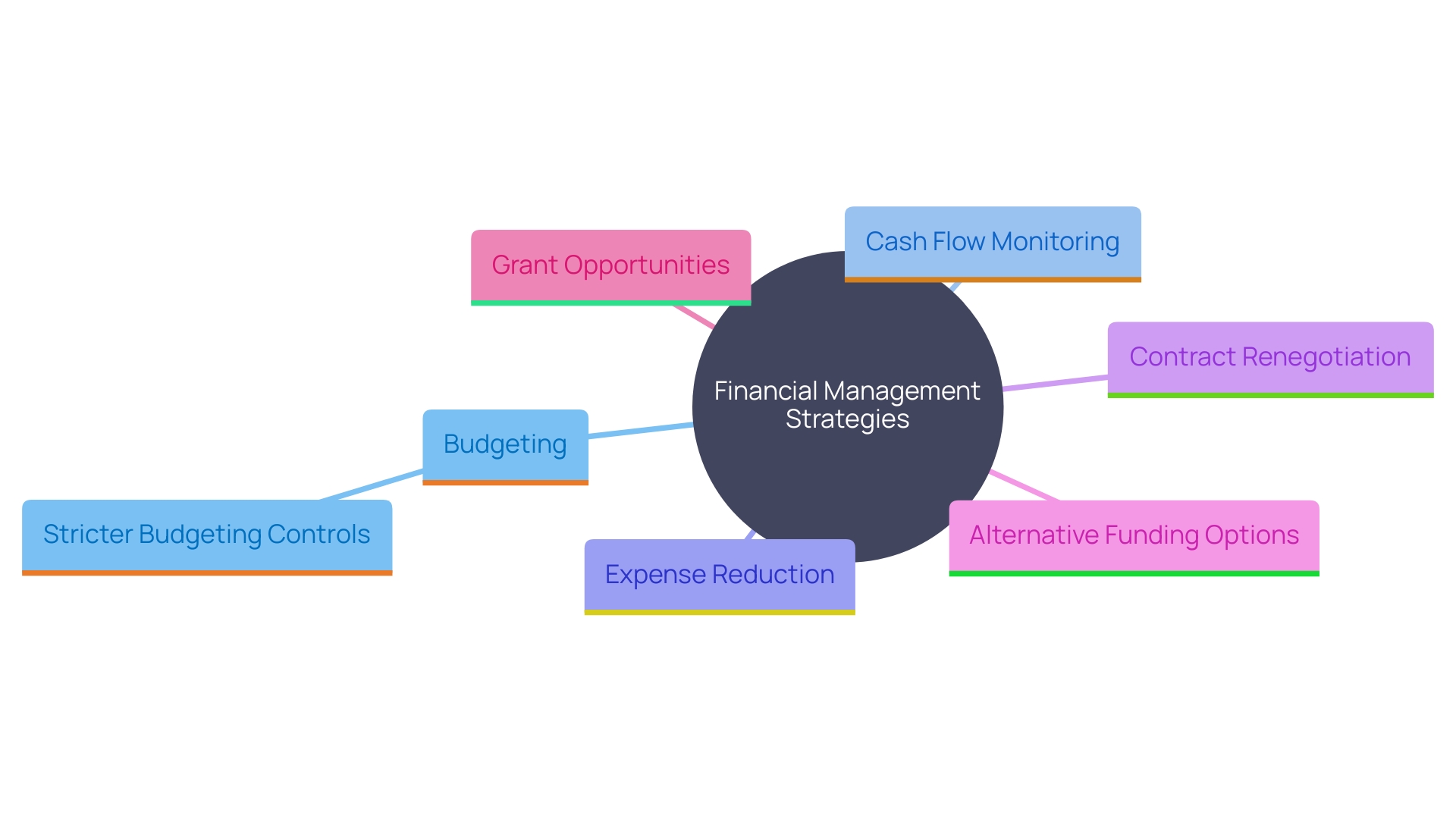
Enhance Marketing Efforts
Revitalize your marketing strategy to reach new customers and re-engage existing ones by leveraging the latest digital marketing tools and targeted advertising campaigns. The digital transformation has fundamentally altered how companies connect with their audiences, making it essential to adapt to new consumer behaviors.
Consumers today are more empowered and connected, thanks to the proliferation of smartphones, social media, and online shopping. As Andrii Holubenko, Digital Media Director at Optimum Media OMD Group Ukraine, observes, "AI elevates the trend for automation to a higher level," allowing organizations to automate routine tasks and concentrate on more strategic activities. This is particularly crucial for small businesses that often face resource constraints.
To stand out in a highly competitive market, personalized and targeted marketing efforts are key. Modern technology allows for precise segmentation, helping you to build a loyal audience rather than attempting to attract as many customers as possible. According to a report from VidenGlobe, “The year 2024 … is a time filled with opportunities and challenges we have never seen before.” Staying updated with the latest trends and continuously evolving your strategies will ensure your marketing efforts resonate more effectively with your audience.
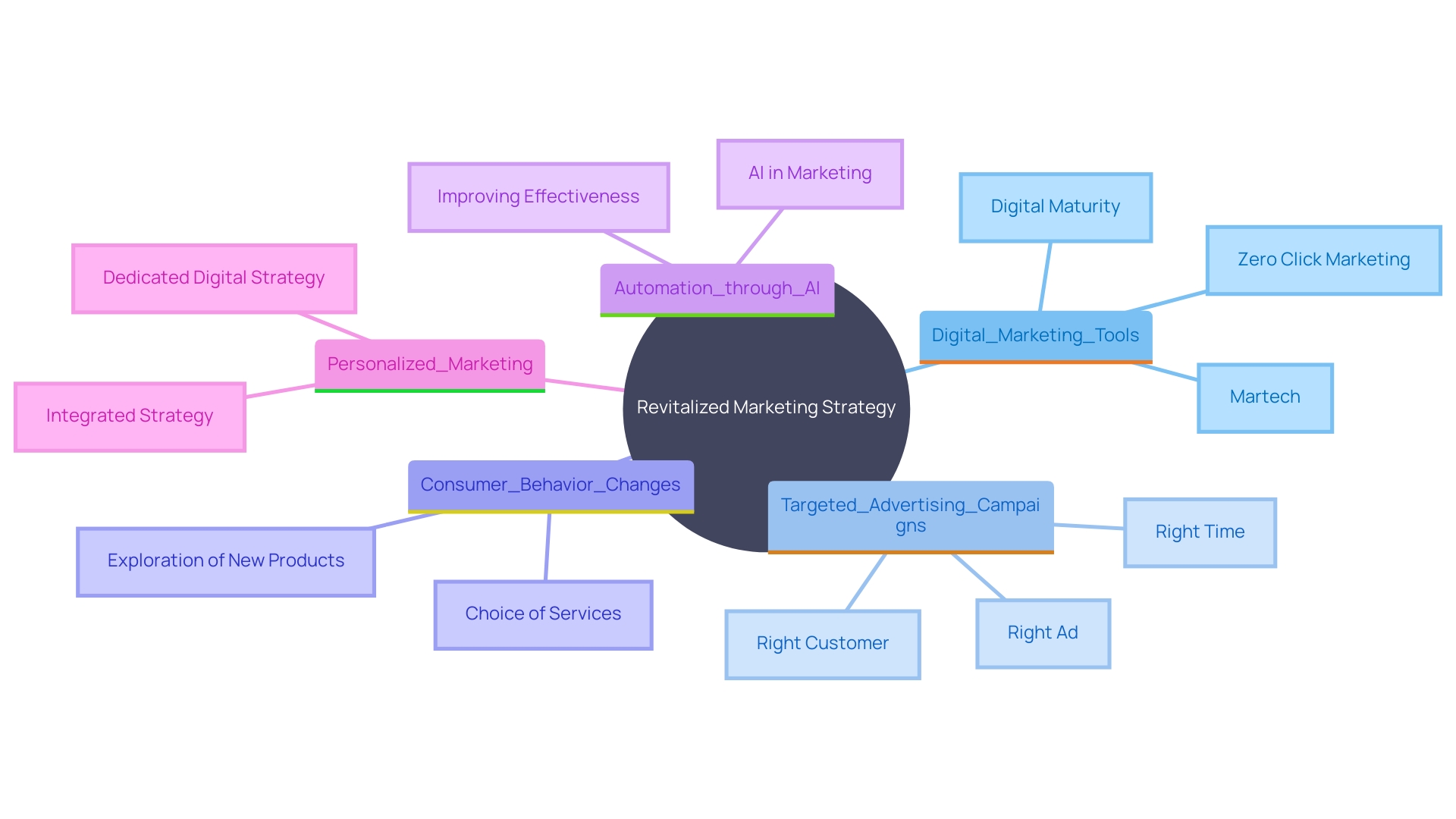
Embrace Innovation and Adaptability
To ensure sustained growth and adaptability, fostering a culture of innovation is paramount. Encouraging team members to propose new ideas and improvements can lead to significant breakthroughs. For instance, a major branded hotel successfully revitalized its restaurant sales by utilizing its prime location and incorporating fresh strategies. This resulted in great reviews and a notable increase in sales within the first week.
Innovation should be strategically aligned with the company’s growth priorities. As emphasized by experts, linking innovation efforts to strategic goals ensures bottom-line growth. This approach was crucial for ALSTOM, which, after facing near bankruptcy, turned around under new leadership by focusing on innovative project selections and leveraging unique advantages.
Furthermore, the launch of checkout-free shops such as the new Dublin Town To Go, driven by Zippin technology, demonstrates how adopting technological innovations can address changing consumer demands effectively. This store provides a seamless shopping experience, showcasing how innovation can enhance satisfaction and operational efficiency.
It's also essential to involve employees in the innovation process. As research indicates, collaborating on the future with your team, especially those nearest to the clients, encourages a more democratic and influential method for innovation. This method not only enhances agility but also scales innovation effectively, ensuring that the organization remains competitive and relevant in today’s dynamic market.
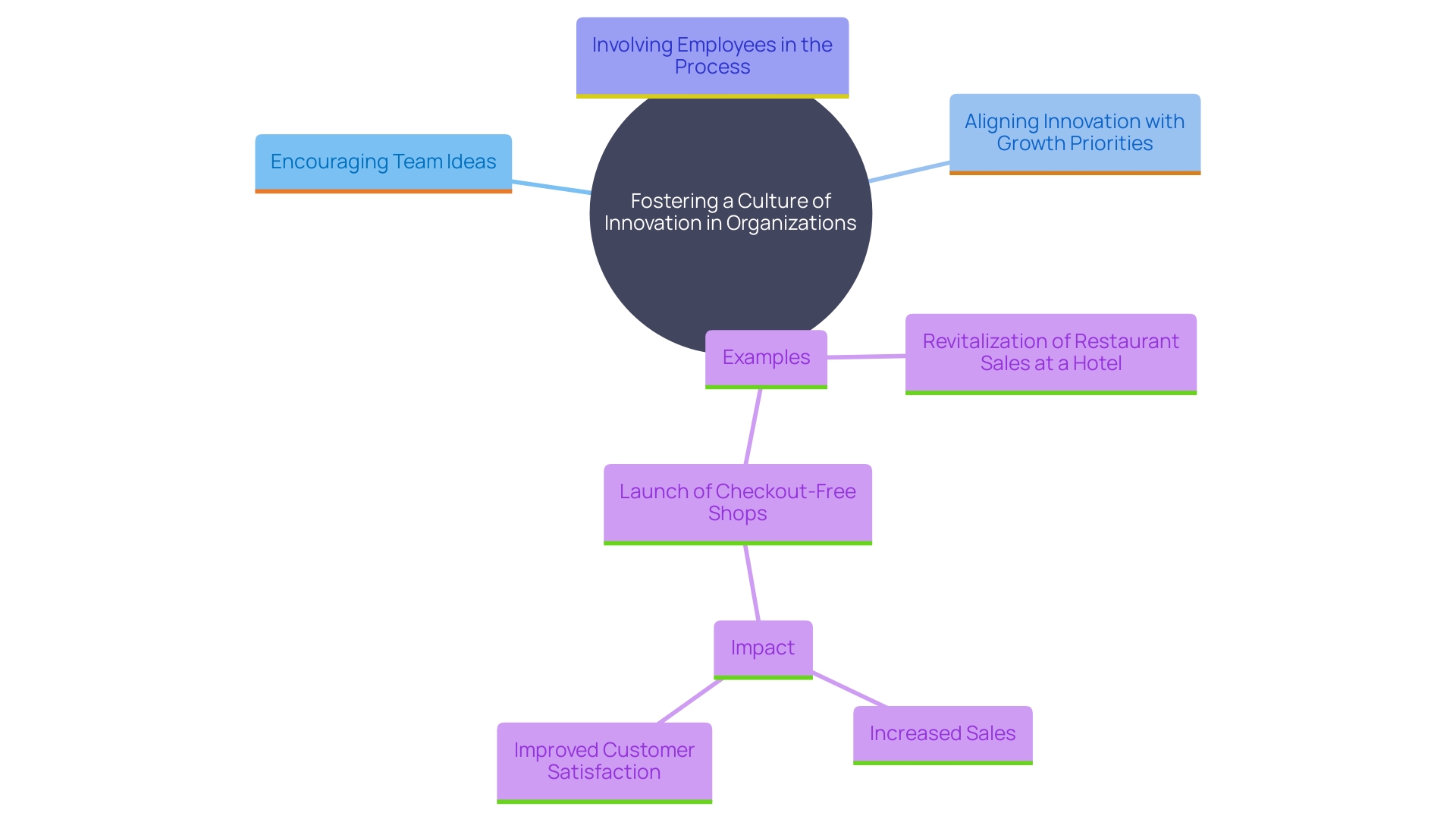
Set Realistic Goals and Track Progress
Establishing specific short-term and long-term objectives is crucial for a recovery plan. Monitoring progress against these goals using key performance indicators (KPIs) ensures that the company remains on track. KPIs, such as revenue growth, profit margins, and customer satisfaction, offer measurable insights into performance and highlight areas needing improvement. Utilizing KPIs can lead to data-driven decisions, which ultimately increase profitability and long-term success.
For example, Andrii Holubenko, a Digital Media Director, highlights the significance of utilizing technology to improve enterprise strategies. By employing automated tools and digital services, small companies can optimize resources and maintain a competitive edge. This approach is crucial in today’s fast-paced commercial environment, where technological advancements continuously reshape the competitive landscape.
Furthermore, companies like Walmart and General Electric have demonstrated the effectiveness of setting ambitious sustainability goals. Walmart aims to be powered by 100% renewable energy by 2035, while General Electric aspires to become a net-zero company by 2050. These goals not only address stakeholder demands but also focus organizational attention and resources on achieving substantial environmental progress.
Regularly reviewing and adjusting goals based on KPI feedback fosters a culture of accountability and adaptability, essential traits for navigating economic volatility and evolving stakeholder expectations. As Shiela Mie Legaspi, President of Cyberbacker, notes, the shift to remote work has underscored the need for clear, measurable objectives to ensure productivity and success in a dynamic corporate environment.
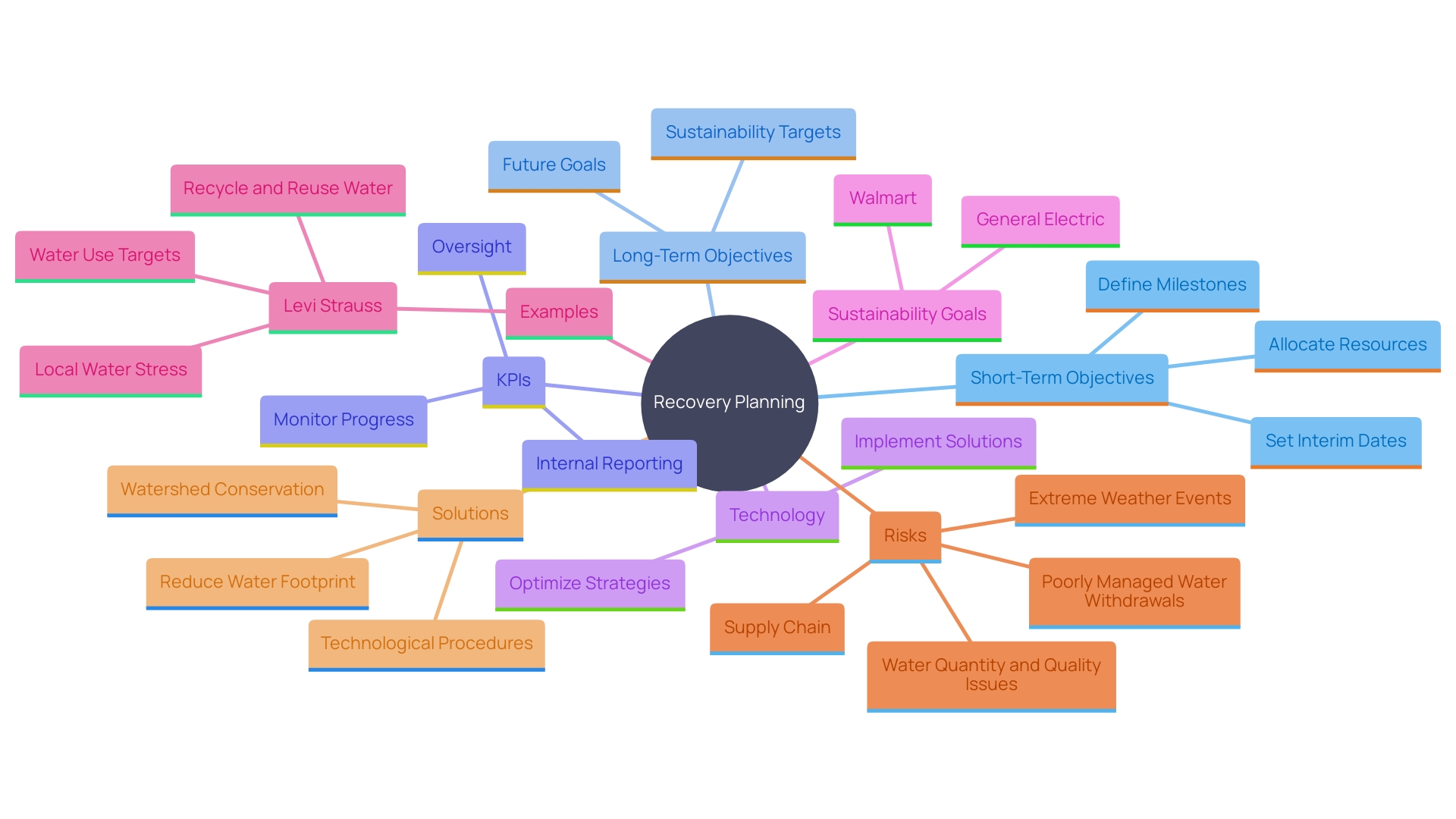
Consider Collaboration and Co-creation
Establishing meaningful partnerships with complementary businesses or organizations can significantly enhance your company's resources and capabilities. Take, for example, Retail Business Services (RBS), which collaborates with MassChallenge to discover innovative solutions tailored to specific challenges. This collaboration allows RBS to share its priorities and gain insights that inform its technological direction, ultimately expanding its market reach and enhancing its offerings.
To ensure a successful partnership, it's crucial to clearly define the purpose and articulate how your solution addresses a specific problem faced by the potential partner. Large corporations, often juggling numerous projects, will be more inclined to engage if they can see the direct benefits of your solution. It's also important to understand and align with the partner's internal processes, creating a mutually beneficial architecture for collaboration.
A well-defined collaboration can lead to notable success. For instance, a major hotel chain saw a considerable increase in sales shortly after leveraging its prime location to attract more diners. Additionally, innovative partnerships can transform consumer experiences, as seen in the healthcare sector, where health systems are increasingly collaborating with non-traditional partners to better serve consumers.
However, it's important to recognize the challenges of collaboration. Research shows that up to 70 percent of collaborative partnerships fail, often because of psychological obstacles rather than logistical issues. Overcoming these obstacles requires a well-structured operating system that fosters continuous improvement and effective teamwork. By focusing on clear objectives, open communication, and a willingness to adapt, businesses can unlock the full potential of strategic partnerships.
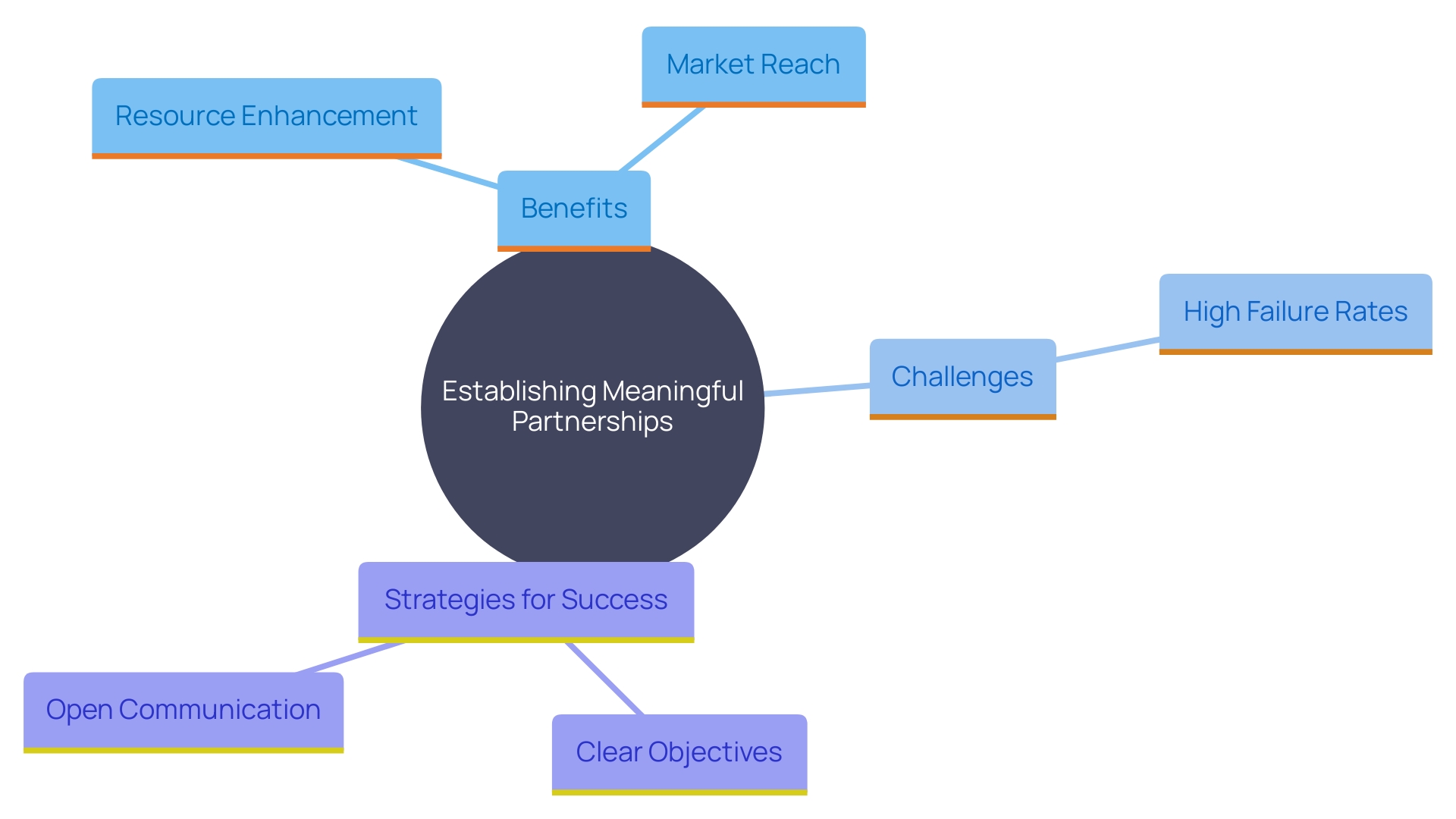
Conclusion
Navigating economic challenges requires a thorough evaluation of business operations. Analyzing financial statements, performance metrics, and gathering relevant data provides insight into current standing, essential for identifying root causes of decline.
Addressing these issues is vital for sustainable recovery. Engaging stakeholders and employing SWOT analysis can reveal areas for improvement. A clear business plan with specific, measurable goals enables businesses to capitalize on growth opportunities while integrating technological advancements.
Strengthening financial management is crucial. Stricter budgeting, renegotiating supplier contracts, and exploring alternative funding can significantly improve cash flow. Revitalizing marketing strategies through targeted campaigns allows businesses to effectively reach new and existing customers.
Fostering a culture of innovation and adaptability is key. Encouraging team input and aligning innovation with growth priorities drives success. Setting realistic goals and tracking progress using key performance indicators ensures accountability.
Finally, forming strategic partnerships enhances resources and capabilities. Clear objectives and open communication unlock the potential of collaboration.
In summary, a multifaceted approach that emphasizes evaluation, strategic planning, financial management, innovative marketing, and collaboration equips businesses to navigate economic turbulence and achieve sustainable growth.




